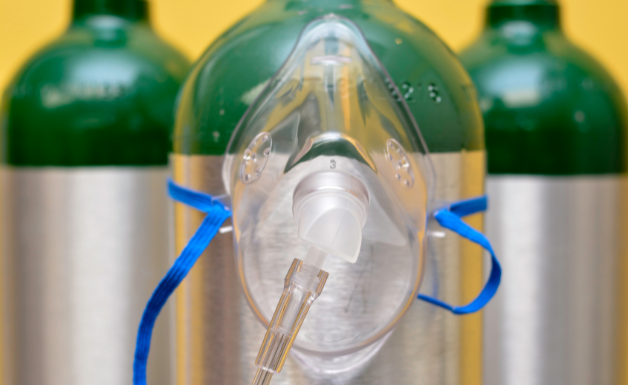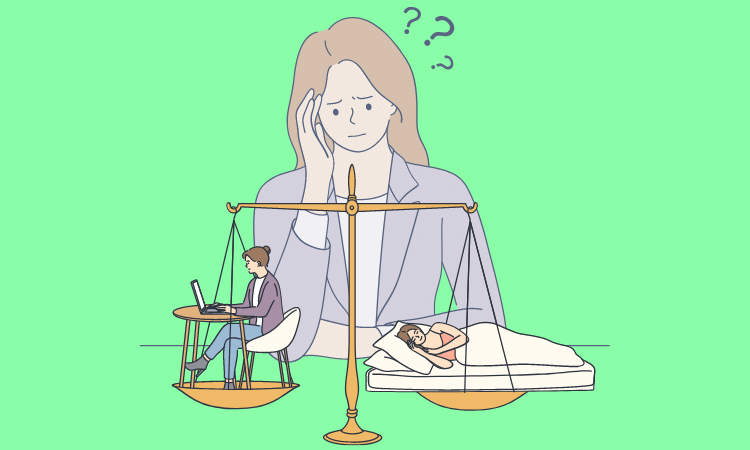Table of Contents
1. Introduction
Importance of Oxygen in Medical Treatment
Oxygen is a critical element for sustaining life, playing a vital role in cellular respiration and energy production. In many medical conditions, the body’s ability to absorb or utilize oxygen is compromised, leading to hypoxemia—a condition marked by low levels of oxygen in the blood. This can be seen in chronic obstructive pulmonary disease (COPD), asthma, pneumonia, cystic fibrosis, and during recovery from surgery or severe illness.
Oxygen therapy involves the administration of oxygen at higher concentrations than what is found in ambient air (21%). Medical oxygen, typically provided through oxygen cylinders or concentrators, can be life-saving for patients with respiratory conditions. It helps to maintain optimal oxygen saturation levels, ensuring that vital organs receive adequate oxygen supply.
Overview of Oxygen Cylinders for Home Use
An oxygen cylinder is a pressurized container that stores medical-grade oxygen, which is used in oxygen therapy to alleviate symptoms of hypoxemia. These cylinders are a common method for delivering supplemental oxygen at home. Given the rising number of chronic respiratory diseases globally—estimated to affect over 380 million people—there’s a growing demand for home-based oxygen therapy. This has made oxygen cylinders an essential medical device for many patients managing long-term health conditions.
2. Types of Oxygen Cylinders and Tanks
Compressed Gas Cylinders
Compressed gas cylinders are the most common type of oxygen storage for medical purposes. They contain oxygen in a gaseous state, pressurized to approximately 2000-2200 psi (pounds per square inch). These cylinders are available in various sizes, ranging from small, portable units (e.g., M6 or M9 cylinders) to larger stationary ones (e.g., E or H cylinders).
- Size Variations: The size of the cylinder determines its oxygen capacity and portability. For example, an M6 cylinder, which is portable and weighs around 3-4 pounds, can hold up to 165 liters of oxygen and last for approximately 3-4 hours at a flow rate of 2 liters per minute (LPM). Conversely, an E cylinder, which is larger and typically used at home, holds about 680 liters of oxygen and can last up to 8-10 hours at the same flow rate.
Liquid Oxygen Tanks
Liquid oxygen tanks store oxygen in a liquid state at extremely low temperatures (-183°C or -297°F). Liquid oxygen has a much higher density than gaseous oxygen, allowing a smaller volume to store a significant amount of oxygen. This makes liquid oxygen tanks particularly advantageous for patients requiring high levels of oxygen over extended periods.
- Advantages for Home Use: Liquid oxygen systems are compact, making them easier to store and transport. A standard liquid oxygen tank can hold enough oxygen to last a patient up to a week, depending on usage. However, the equipment needed to convert liquid oxygen back to a gaseous state for inhalation can be more expensive and requires careful handling due to the low temperatures involved.
Oxygen Concentrators (Brief Mention)
Oxygen concentrators are not tanks but machines that filter and concentrate oxygen from ambient air. While not the focus of this article, it’s important to note that concentrators are an alternative to oxygen cylinders for home use, especially for patients who require continuous low-flow oxygen. However, they are less portable than smaller oxygen cylinders and require a power source, making them less versatile in certain scenarios.
3. Selecting the Right Oxygen Cylinder for Home Use
Factors to Consider
Selecting the appropriate oxygen cylinder depends on several factors:
- Patient’s Medical Condition: The severity of the patient’s respiratory condition and their specific oxygen needs are crucial. For instance, a patient with advanced COPD may require a higher flow rate (e.g., 4-6 LPM) compared to someone with mild hypoxemia.
- Duration of Daily Oxygen Use: Some patients may need oxygen therapy only at night or for specific activities, while others may require continuous oxygen throughout the day. A larger cylinder or a liquid oxygen system might be more suitable for continuous use.
- Portability and Ease of Use: For patients who are mobile and wish to maintain an active lifestyle, smaller, portable cylinders are ideal. These can be easily carried in a backpack or wheeled cart.
Sizing of Medical Oxygen Tanks
Understanding the size of the oxygen tank is essential for ensuring that the patient has an adequate supply of oxygen throughout the day. Here’s how different sizes compare:
- M6 Cylinder: Holds 165 liters of oxygen; lasts 3-4 hours at 2 LPM.
- E Cylinder: Holds 680 liters of oxygen; lasts 8-10 hours at 2 LPM.
- H Cylinder: Holds 6,900 liters of oxygen; typically used as a stationary home unit, lasting several days at 2 LPM.
To calculate the duration a tank will last, use the following formula:Duration (hours)=Cylinder Pressure (psi)×Cylinder FactorFlow Rate (LPM)\text{Duration (hours)} = \frac{\text{Cylinder Pressure (psi)} \times \text{Cylinder Factor}}{\text{Flow Rate (LPM)}}Duration (hours)=Flow Rate (LPM)Cylinder Pressure (psi)×Cylinder Factor
For example, an E cylinder with 2000 psi, used at a flow rate of 2 LPM:Duration=2000×0.282=280 minutes=4.67 hours\text{Duration} = \frac{2000 \times 0.28}{2} = 280 \text{ minutes} = 4.67 \text{ hours}Duration=22000×0.28=280 minutes=4.67 hours
4. Setting Up a Medical Oxygen Tank at Home
Safety Precautions
Safety is paramount when storing and using oxygen cylinders at home due to the risk of fire. Oxygen is not flammable, but it supports combustion, making it easier for fires to start and spread. Key safety guidelines include:
- Storage: Keep cylinders in a well-ventilated area, away from heat sources, open flames, and electrical appliances. They should be secured upright to prevent tipping.
- Fire Safety: Do not smoke or allow others to smoke in the room where oxygen is being used. Have a fire extinguisher accessible.
Proper Handling and Usage
Correct handling and usage of oxygen cylinders are essential to ensure patient safety and the effectiveness of the therapy.
- Connecting the Cylinder: Attach the regulator to the cylinder, ensuring a tight seal. Set the flow rate as prescribed by the healthcare provider.
- Monitoring Oxygen Levels: Regularly check the pressure gauge to monitor the remaining oxygen in the tank. It’s crucial to replace or refill the tank before it’s empty to avoid interruptions in therapy.
Maintenance and Refilling
Proper maintenance ensures the longevity and reliability of the oxygen cylinder. Regular checks should be performed to identify any leaks or damage to the cylinder or regulator.
- Refilling: Compressed gas cylinders need to be refilled by a medical supply company. Liquid oxygen tanks require refilling more frequently, but the process is typically managed by the provider.
5. Advantages of Using Oxygen Cylinders for Home Use
Enhanced Quality of Life
Oxygen therapy can significantly improve the quality of life for patients with chronic respiratory conditions. By ensuring adequate oxygenation, patients experience reduced shortness of breath, increased energy levels, and improved sleep quality. This enables them to perform daily activities more comfortably and with greater independence.
Immediate Access to Oxygen Therapy
Having an oxygen cylinder at home provides immediate access to oxygen therapy, which is particularly beneficial in emergencies or during sudden exacerbations of respiratory conditions. This can reduce the need for hospital visits and allow patients to manage their condition more effectively at home.
Cost-Effectiveness
While the initial cost of purchasing or renting an oxygen cylinder and associated equipment may be significant, it is often more cost-effective in the long run compared to frequent hospitalizations or other forms of oxygen delivery.
- Comparison: Oxygen concentrators, while convenient, have ongoing costs related to electricity usage and maintenance. In contrast, oxygen cylinders, especially when used intermittently, can be more economical.
6. Potential Challenges and Solutions
Dealing with Limited Mobility
For patients with limited mobility, managing a bulky oxygen cylinder can be challenging. Solutions include:
- Portable Oxygen Cylinders: Smaller, lighter cylinders can be easily carried, enabling patients to maintain mobility.
- Wheeled Carts and Backpacks: These accessories help transport oxygen cylinders with minimal physical effort, allowing patients to move around more freely.
Understanding Insurance and Costs
Navigating the costs associated with oxygen therapy can be complex, especially regarding insurance coverage. In the U.S., Medicare Part B covers some of the costs for home oxygen therapy, but patients may still face out-of-pocket expenses.
- Insurance Coverage: It’s important to verify coverage details with insurance providers, including what types of oxygen equipment are covered and any associated costs.
- Managing Expenses: Patients can manage costs by choosing the most appropriate equipment for their needs, considering long-term costs, and exploring options like rental programs for oxygen tanks.
7. Frequently Asked Questions (FAQs)
- How long does an oxygen cylinder last?
- The duration depends on the cylinder size and the prescribed flow rate. For example, an E cylinder lasts approximately 8-10 hours at a flow rate of 2 LPM.
- Can I travel with a medical oxygen tank?
- Yes, but it requires careful planning. Portable oxygen cylinders are ideal for travel, and patients should check with airlines and other transport providers for specific regulations.
- What should I do in case of an emergency with the oxygen cylinder?
- Ensure that a backup cylinder is available, and contact your oxygen provider immediately. Follow safety protocols, including having a fire extinguisher and smoke alarms installed.



